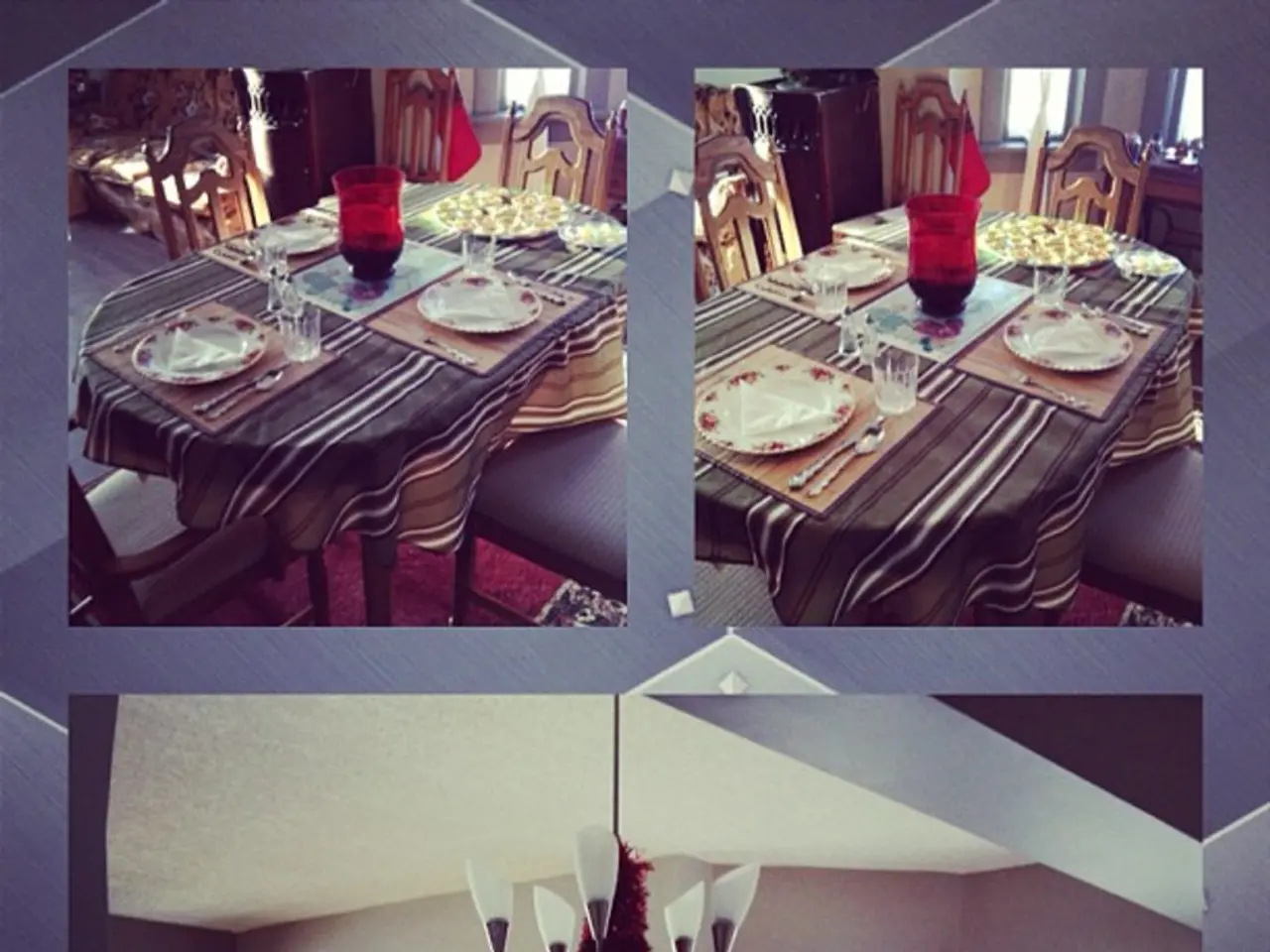Subtle Touch Required in Refurbishment of 1920s Colonial Revival House: Designer's Approach to Blend Antique Charm with Contemporary Lifestyle
In the heart of Dallas, Texas, a 1926 colonial revival home undergoes a transformation, blending historical elegance and symmetry with warmth, sustainable materials, and functional design. This contemporary makeover, led by interior designer Noel Pittman, focuses on modernizing key areas while preserving the home's colonial charm.
The kitchen, now boasting an open layout, overlooks the great room and dining room, promoting connectivity and light flow. Earthy tones and natural materials, such as warm browns, soft olives, and muted terracottas, have been embraced for cabinetry, tiles, and walls, reflecting 2025 design trends. Modern cottagecore elements, a blend of vintage textiles and classic colonial symmetry with modern appliances and clean lines, elevate the aesthetic while preserving functionality. Matte finishes on tiles and textured wallpapers add a natural touch and richness, balancing colonial tradition with contemporary warmth.
The breakfast nook, a cozy, sunlit space, features cushioned benches or upholstered seating that nod to vintage colonial textiles, updated for modern comfort. The fabric with a bird pattern, from Lisa Fine Textiles, was used in this area.
The sunroom, once a bright and airy space, has been softened with soft, layered neutrals like creamy beige or soft grey with green/brown undertones, creating a serene, nature-connected retreat. The room, repurposed to feel like an exterior space that was later enclosed, features conservatory-style furniture and leafy print fabrics. Unlined linen curtains, wicker seating, and a fern print fabric were used to complete the sunroom.
The living room preserves the symmetry and classic architecture of colonial homes while introducing modern furniture with clean lines and quality natural materials. Earthy tones and layered neutrals on walls and upholstery provide warmth and depth, avoiding stark whites for a more inviting space. The room features a rustic oak table, leather-covered chairs, and bespoke pieces such as an iron and leather chair and a coffee table.
The dining room showcases timeless, well-constructed furniture reminiscent of mid-century modern aesthetics but adapted for today’s needs—clean lines combined with rich wood tones. Pairing this with warm, earthy textiles or wallpapers balances the room’s formal symmetry with a cozy, contemporary feel.
The nursery reflects the calmness of the overall home by using natural, soothing colors from the earthy palette and sustainable materials. Simple, functional furniture with clean lines but soft textures and fabrics create a nurturing environment rooted in comfort and wellness trends.
In the powder room, textured wallpapers or matte finish tiles in earth tones add subtle elegance. Traditional colonial moldings and fixtures are combined with modern minimalist sinks and smart lighting to achieve a balance of historic charm and contemporary functionality.
This modernization project demonstrates how contemporary ideas for decorating a colonial style home focus on blending the traditional architectural charm with modern functionality, comfort, and style. Earthy tones, natural textures, vintage-modern mixes, and open, connected spaces are key themes for kitchen updates and designing the various living spaces within a colonial home in 2025.
- The contemporary makeover, led by interior designer Noel Pittman, incorporates earthy tones and natural materials in the kitchen, reflecting 2025 design trends, with modern cottagecore elements that blend vintage textiles and classic colonial symmetry with modern appliances and clean lines.
- The living room, a testament to the contemporary transformation of the colonial home, preserves the symmetry and classic architecture of colonial homes while introducing modern furniture with clean lines and quality natural materials, incorporating earthy tones and layered neutrals on walls and upholstery to provide warmth and depth.




